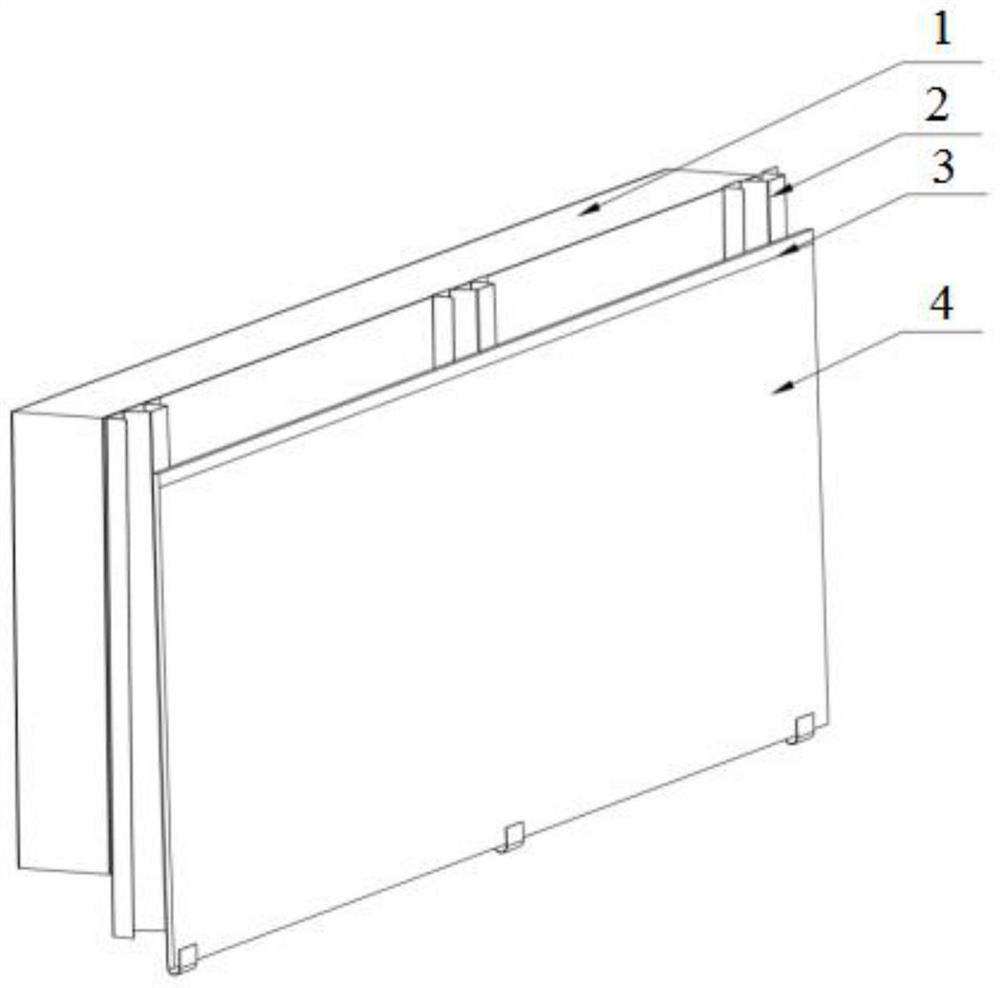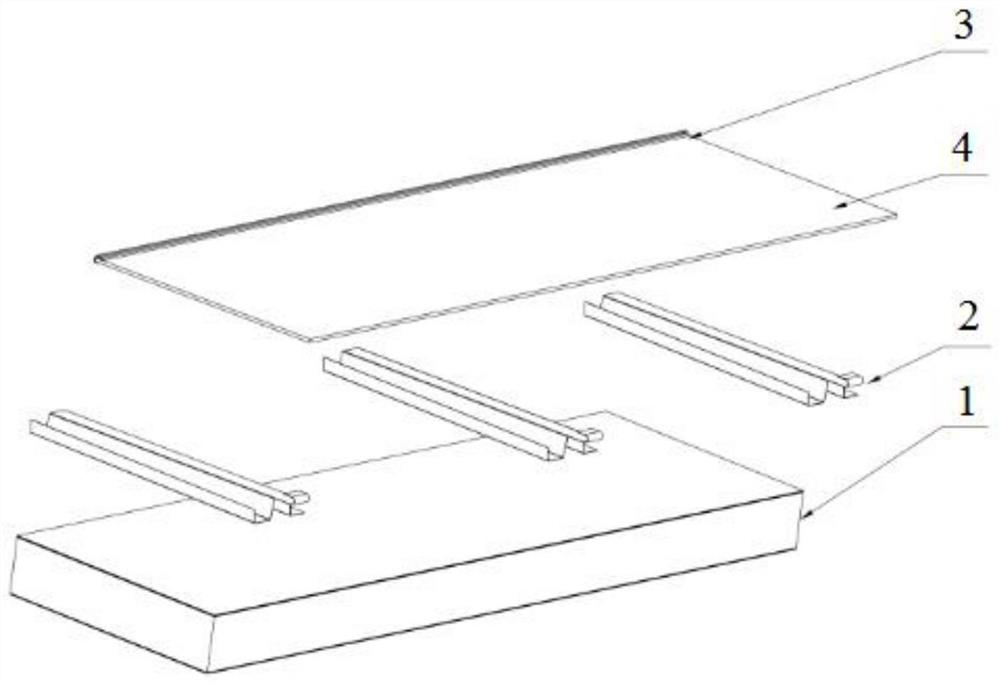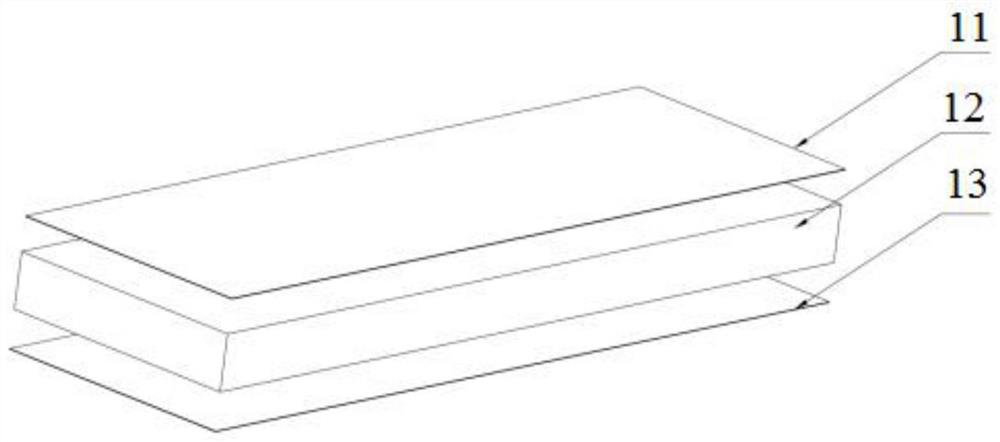Curved-surface colored and modular prefabricated power generation building material and manufacturing method
A colorized and modularized technology, applied in the field of building materials, can solve problems such as fire performance, waterproof structure, indoor moisture resistance, ventilation and heat dissipation and building insulation, long cycle time, safety hazards, etc.
- Summary
- Abstract
- Description
- Claims
- Application Information
AI Technical Summary
Problems solved by technology
Method used
Image
Examples
Embodiment 1
[0041] A curved surface colored modular prefabricated power generation building material, the power generation building material of the present invention is assembled from several single photovoltaic modules, such as Figure 9 and Figure 12 shown.
[0042] The structure of the photovoltaic module is as Figure 1 to Figure 8 As shown, it includes an integrated insulation layer 1, a quick installation bracket 2, a rubber strip 3 and a photovoltaic module 4; wherein the integrated insulation layer 1 is located at the bottom, and the integrated insulation layer is bonded to the photovoltaic module 4 through the quick installation bracket 2 arranged at intervals and parallel. The photovoltaic module is parallel to the integrated insulation layer and has the same size, and at least two quick mounting brackets 2 are arranged on the left and right edges of the lower end surface of the photovoltaic module 4 . The rubber strip 3 is fixedly arranged on the top edge of the top surface ...
Embodiment 2
[0072] The difference between this embodiment and Embodiment 1 is that the single photovoltaic module is a curved photovoltaic module, such as Figure 10 to Figure 11shown. Assembled large-area structures such as Figure 12 shown.
[0073] Among them, during the production process of photovoltaic modules, the magnetron sputtering process is used to form the inner surface of the polymer film when making the nano film layer.
PUM
 Login to View More
Login to View More Abstract
Description
Claims
Application Information
 Login to View More
Login to View More - R&D
- Intellectual Property
- Life Sciences
- Materials
- Tech Scout
- Unparalleled Data Quality
- Higher Quality Content
- 60% Fewer Hallucinations
Browse by: Latest US Patents, China's latest patents, Technical Efficacy Thesaurus, Application Domain, Technology Topic, Popular Technical Reports.
© 2025 PatSnap. All rights reserved.Legal|Privacy policy|Modern Slavery Act Transparency Statement|Sitemap|About US| Contact US: help@patsnap.com



